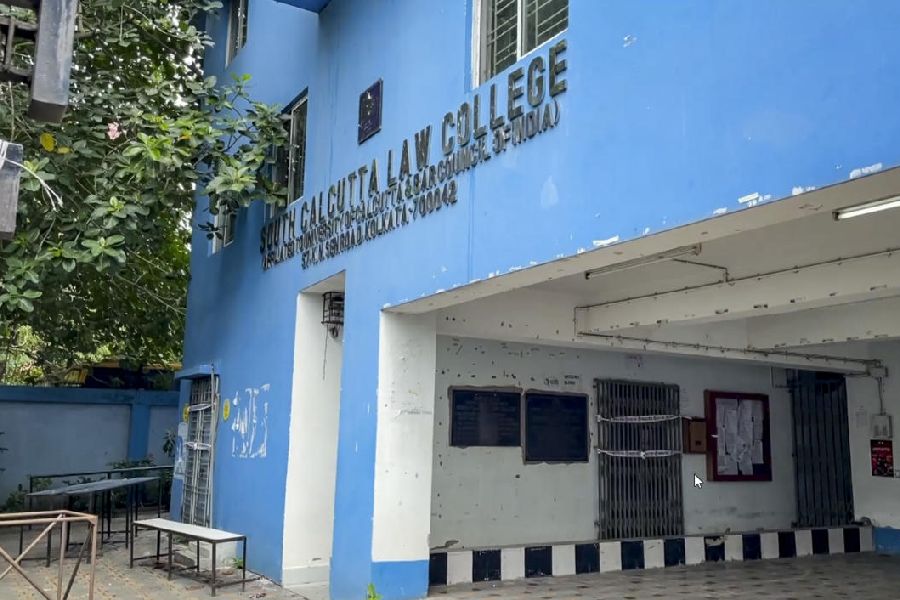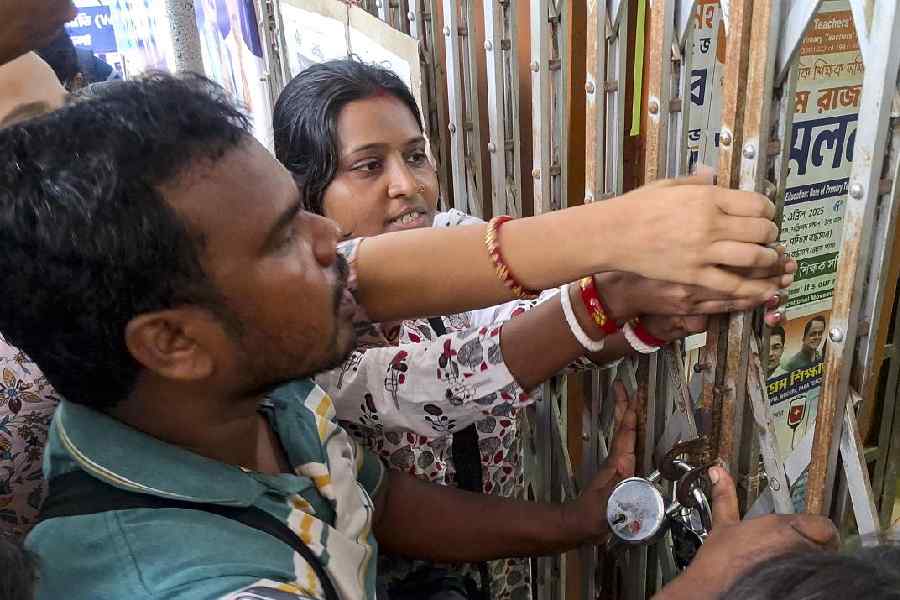.jpg) |
.jpg) |
.jpg) |
.jpg) |
| Walls of the Lakheshwar temple in Bhubaneswar are decorated with Kalingan motifs. Although the Orissa State Archaeology undertook repair work few years ago, the monument shows signs of deterioration as erosion has defaced many sculptures. Pictures by Ashwinee Pati |
Bhubaneswar, April 26: From an ancient architectural beauty to a den for drug addicts — the Lakheswara temple in the Old Town area speaks volumes about the lack of awareness of the importance of heritage sites among the public as well as authorities.
The stupendous 13th century monument is craving for attention of the culture and tourism departments.
Located on the right side of the Ganga Yamuna road right in front of the Ganga-Yamuna tank and the twin temples of Gangeswar and Yamuneswar, the Lakheswara Shiva temple is around 12 metres tall. The finesse in the construction of the temple makes it a significant heritage site. However, quite a few portions of the temple have been broken and many others damaged recently. The temple has also developed cracks on the roof and walls. Although local residents use the temple for worship, they are not aware of the history of the monument. But many allege that the precinct has become a regular spot of meeting for drug addicts.
“The temple has been standing here since ages and we have grown up around it. Many major festivals used to be observed here. But nowadays it has become the meeting point for drug addicts who have can be found here almost throughout the day,” said Brahmajyoti Behera, a local resident.
“It is a huge monument but the government authorities do not look into its regular maintenance. It thus stands unprotected and vulnerable to various hazards, natural as well as man-made,” said Jyoti Sahoo, a visitor to the temple.
The walls of the temple have been decorated with typical Kalingan motifs. One finds a number of Shaivite deities carved on the four walls, posing in interesting forms. Although the Orissa State Archaeology undertook repair work a few years ago, the monument shows signs of deterioration since erosion has defaced many sculptures on the temple walls.
Moreover, the seepage of rainwater through the cracks on the dome and walls are also threatening the structure.
One of the major threats to Lakheswara, however, is from the dense growth of vegetation around the temple and the climbers that creep on the dome and have coiled around the statues on the outer roof. Entwined by the roots of the vegetation around, stems of climbers that grow on the walls and the electric wires that are used for the lighting of the temple, the sculptures and many portions of the temple have already been damaged.










